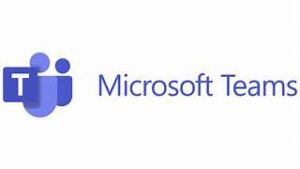
In the era of remote work and global connectivity, effective communication and collaboration have become essential for businesses to thrive. Microsoft Teams, a powerful collaboration platform, has emerged as a central hub for teamwork, offering a comprehensive suite of tools to connect, communicate, and collaborate seamlessly. This article explores the features and impact of Microsoft Teams on the modern digital workplace.
1. A Hub for Teamwork and Collaboration
Microsoft Teams serves as a centralized workspace that brings together chat, video conferencing, file sharing, and application integration under one roof. This unified approach allows teams to collaborate in real-time, fostering a sense of connectivity regardless of physical locations.
2. Real-Time Communication through Chat and Video Conferencing
At the core of Microsoft Teams is its chat functionality, enabling instant messaging, file sharing, and threaded conversations. The platform seamlessly integrates with video conferencing, providing teams with the ability to conduct virtual meetings, making collaboration dynamic and engaging.
3. Integration with Microsoft 365 Apps
Microsoft Teams seamlessly integrates with the Microsoft 365 suite of applications. Users can edit documents, collaborate on presentations, and update spreadsheets within the Teams environment, eliminating the need to switch between multiple applications. This integration enhances productivity and streamlines workflow processes.
4. Channel-based Organization for Structured Collaboration
Teams in Microsoft Teams are organized into channels, creating a structured environment for collaboration. Each channel can focus on specific projects, departments, or topics, allowing team members to access relevant information and discussions easily. This organization fosters a more efficient and focused collaboration experience.
5. File Sharing and Collaboration in the Cloud
Microsoft Teams leverages the power of the cloud for file storage and sharing. Through integration with OneDrive and SharePoint, users can collaborate on documents in real-time, ensuring that everyone is working on the latest version. This cloud-based approach enhances accessibility and promotes seamless collaboration regardless of physical locations.
6. Virtual Collaboration Beyond Borders
Especially relevant in the era of remote work, This is facilitates virtual collaboration beyond geographical borders. With features like virtual backgrounds, live captions, and real-time translation, Teams ensures that teams can collaborate effectively, irrespective of language barriers or diverse work environments.
7. Security and Compliance for Peace of Mind
Security is a top priority in the digital workplace, and Microsoft Teams prioritizes this aspect. The platform adheres to stringent security measures, including data encryption, multi-factor authentication, and compliance with industry regulations. This ensures that sensitive information shared within Teams is secure and compliant with organizational and legal standards.
Conclusion:
In conclusion, Microsoft Teams has become a cornerstone in reshaping how teams collaborate and communicate in the digital workplace. By providing a unified platform, real-time communication tools, and seamless integration with Microsoft 365, Teams empowers organizations to adapt to the evolving nature of work. As the digital landscape continues to transform, This is stands as a testament to the importance of unified collaboration tools in fostering a connected, productive, and innovative workforce.